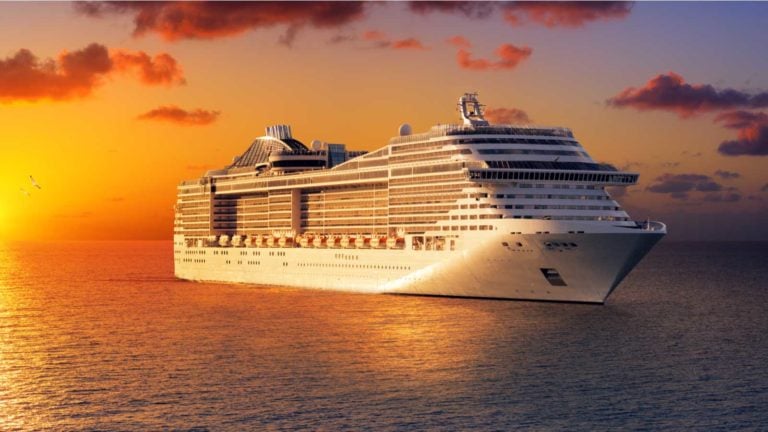Cruise stocks have recovered in the last six months, and for many investors a potential recovery in the second half of the year has been reason for optimism. However, from a fundamental perspective, there is a long road to recovery.
The novel coronavirus pandemic has taken a toll on any industry related to travel and tourism. Cruiseline companies were among the worst hit. Even as some sort of normalcy appears to be on the horizon, these companies are not pushing for growth—they are fighting for survival.
Cruise companies have been burdened with debt and with a high level of cash burn that likely will sustain through fiscal year 2021. Even with gradual industry recovery in the second half of the year, their balance sheets are likely to remain stressed.
I want to discuss three cruising companies with a high level of debt. These companies might eventually navigate the crisis, but I wouldn’t be surprised if the industry witnesses some distressed asset sale or potential consolidation.
Let’s talk about the credit outlook for the following cruise stocks.
3 Cruise Stocks With Titanic Debt: Norwegian Cruise Line (NCLH)

From oversold levels, NCLH stock has surged by 80% in the last six months. However, the company is faced with a significant debt burden as the virus continues to impact the industry’s outlook.
As of September 2020, the company reported total debt of $11.3 billion. In addition, $850 million in senior notes was issued in December 2020. This increases the total debt burden to $12.15 billion. The positive factor is that Norwegian Cruise Line has $2.7 billion in debt refinancing over the next three years. I don’t see that as a major challenge.
However, the company reported an average cash burn of $150 million per month for the third quarter of 2020. This implies an annualized cash burn of $1.8 billion.
As a matter of fact, the company expects its cash burn to increase in the coming months as preparation for return to service begins. Therefore, as the outlook for cruising remains uncertain, the company needs to service debt with its existing cash buffer.
Even when voyages commence, it’s unlikely that the company will be profitable at an earnings before interest, taxes, depreciation and amortization (EBITDA) level. In other words, debt servicing will remain a concern and will continue to increase the balance sheet stress. It’s worth noting that the company has already announced it will extend the suspension of voyages through April 2020.
Overall, Norwegian Cruise Line might have encouraging pre-bookings for the second half of the year. However, that’s not enough to deliver positive cash flows. I expect further fund raising, and that’s likely to worsen credit metrics and keep NCLH stock sideways to lower after the big rally.
Carnival Corporation (CCL)

CCL stock is another name among cruise stocks that has trended higher in the last six months. During this period, the stock has returned 52%. The rally has been triggered by optimism on recovery for the industry in the current year. However, the recovery is likely to be slow, and Carnival Corporation has a balance sheet with titanic debt.
As of August 2020, the company reported total debt of $24.9 billion. The company’s credit rating was downgraded below investment grade by Moody’s and S&P in March 2020. I would not be surprised by a further rating downgrade.
Of course, the company reported $9.5 billion in cash and equivalents as of November 2020. However, for Q4 2020, the company expects it monthly cash burn at $530 million. Cash burn is likely to sustain well into the current year. Therefore, the balance sheet debt is likely to increase in the next few quarters.
In addition, Carnival Corporation has $4.2 billion in debt refinancing that’s due in the next 24 months. Refinancing is likely at a higher cost of debt with a lower credit rating. The debt servicing burden is likely to remain high.
I do believe that Carnival Corporation will navigate the crisis. However, recovery is likely to be slow and profitability will continue to be impacted by the debt burden. For now, I would be cautious on fresh exposure to CCL stock after a meaningful upside.
Royal Caribbean Group (RCL)

Like other cruise stocks, RCL stock has also trended higher in the last six months. However, the company also has a balance sheet that’s burdened with debt. The company’s credit stress is likely to sustain in the coming quarters.
As of September 2020, Royal Caribbean reported total debt of $18.9 billion. For the first nine months of last year, the company’s interest expense was $258 million. This implies an annualized debt servicing cost of $344 million.
With operating level losses and high debt-servicing costs, the company’s balance sheet debt is likely to increase. To put things into perspective, Royal Caribbean expects its monthly cash burn in the range of $250 to $290 million. It’s worth noting that the company has ample liquidity buffer to navigate the crisis. However, debt will continue to impact growth well beyond the current crisis.
In recent news, the company entered into an agreement to sell its Azamara brand to Sycamore Partners for $201 million. I expect more asset sales in the coming quarters to deleverage the balance sheet.
Overall, the markets are optimistic about a second half recovery for the industry. If that happens, RCL stock is likely to trend higher. For now, I expect the stock to remain sideways to lower.
On the date of publication, Faisal Humayun did not have (either directly or indirectly) any positions in any of the securities mentioned in this article.
Faisal Humayun is a senior research analyst with 12 years of industry experience in the field of credit research, equity research and financial modelling. Faisal has authored over 1,500 stock specific articles with focus on the technology, energy and commodities sector.
